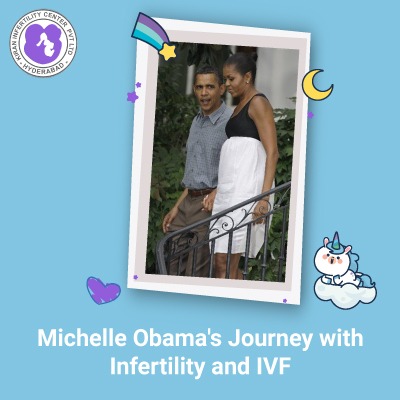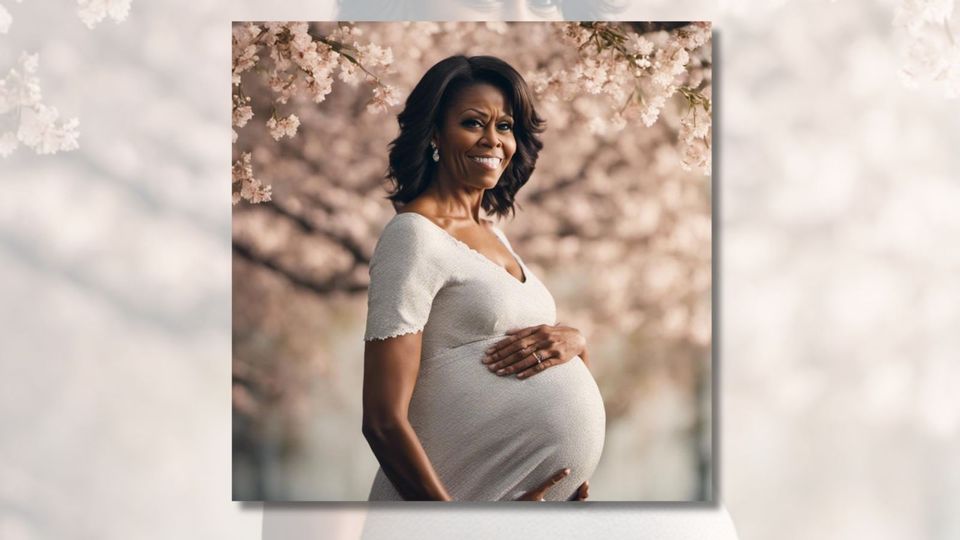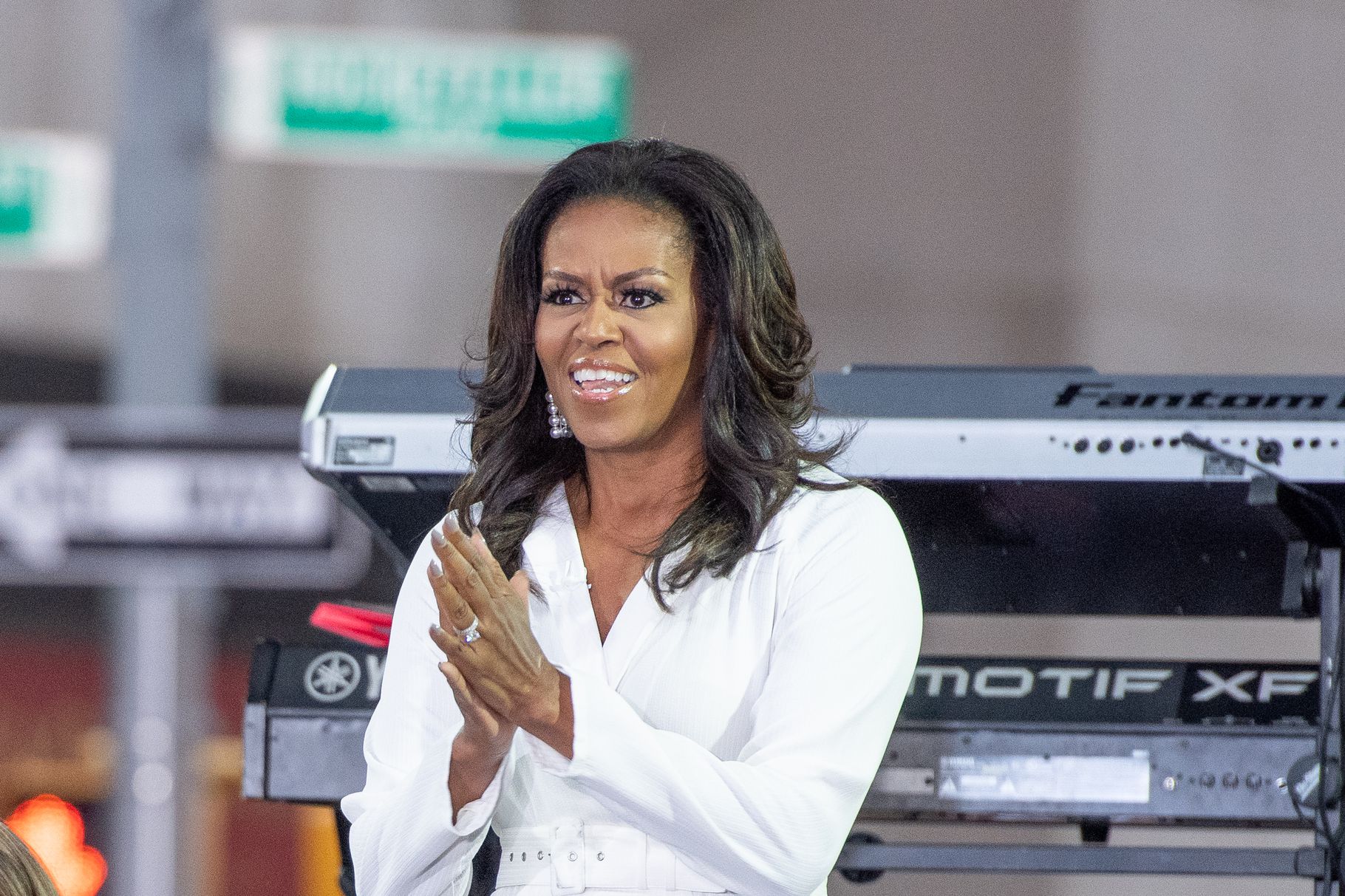
Approximate IVF Costs: Everything You Need to Know in 2025
April 8, 2025Michelle Obama’s IVF Story: A Deep Dive into Her Journey, Struggles, and Inspiration
Michelle Obama is a name that resonates with millions around the world. As the former First Lady of the United States, she’s known for her grace, intelligence, and advocacy. But behind the public spotlight lies a deeply personal story that many fans might not know: her journey through infertility, miscarriage, and in vitro fertilization (IVF) to become a mom to Malia and Sasha. In her memoir Becoming, Michelle opened up about these challenges, offering a rare glimpse into her private life that’s both relatable and inspiring.
This blog post isn’t just a recap of her story—it’s a deep dive into the details fans crave, like her hidden struggles, personal quirks, and the emotional rollercoaster she faced. We’ll explore what her IVF journey reveals about her as a person, uncover lesser-known facts, and provide practical insights for anyone curious about infertility or IVF. Plus, we’ll sprinkle in the latest research and tips to make this a one-stop resource for understanding Michelle Obama’s experience and what it means for everyday people.
The Unexpected Struggles of Michelle Obama’s Early Marriage
Michelle Obama’s life might seem picture-perfect now—married to Barack Obama, raising two amazing daughters, and living a legacy of impact. But rewind to the 1990s, and you’ll find a young couple facing a challenge they never expected: infertility.
A Miscarriage That Changed Everything
Michelle was 34 when she and Barack started trying to have a baby. Like many couples, they were excited and hopeful. But after a miscarriage—something she describes as happening about 20 years before her 2018 memoir came out—she felt “lost and alone.” In Becoming, she writes, “I felt like I failed because I didn’t know how common miscarriages were because we don’t talk about them.”
- Core Point: Miscarriage isn’t rare—it happens in about 1 in 5 pregnancies, according to the American Pregnancy Association. Yet, Michelle felt isolated because it’s a topic people often avoid.
- Fan Insight: She’s not just a polished public figure; she’s someone who’s wrestled with self-doubt and grief, just like many of us.
Michelle didn’t know then that her story would one day help millions feel less alone. She told ABC’s Robin Roberts, “We sit in our own pain, thinking that somehow we’re broken.” That raw honesty is what makes her so relatable.
The Pressure of the Biological Clock
By her mid-30s, Michelle realized time wasn’t on her side. “The biological clock is real,” she said in that same interview, “because egg production is limited.” This hit her hard at 34 and 35—a time when she and Barack were juggling busy careers. He was a state legislator, often away, leaving her to manage much of their fertility journey solo.
- Did You Know?: Michelle has a quirky side—she’s admitted to loving puzzles and word games to unwind. Imagine her sitting at home, injecting herself with IVF hormones, maybe with a crossword puzzle nearby to keep her mind off the stress!
- Science Bit: Women’s egg counts drop sharply after 35, per the American College of Obstetricians and Gynecologists (ACOG). Michelle’s age put her in a tricky spot, pushing her toward IVF.
Her openness about this pressure isn’t just a fun fact—it’s a wake-up call for anyone who thinks starting a family can wait forever.
Michelle’s IVF Journey: Behind the Scenes
After the miscarriage, Michelle and Barack turned to IVF to conceive their daughters, Malia (born 1998) and Sasha (born 2001). But what was it really like for her? Let’s peel back the curtain.
The Solo Shots and Emotional Toll
IVF isn’t a quick fix. It involves hormone injections, doctor visits, and a lot of waiting. Michelle had to give herself shots while Barack was busy with work. She wrote in Becoming, “My sweet, attentive husband was at the state legislature, leaving me largely on my own to manipulate my reproductive system into peak efficiency.”
- Fan Tidbit: Michelle’s a planner—she loves organizing everything, from White House events to her kids’ schedules. Handling IVF alone probably tapped into that skill, but it also tested her patience.
- Reality Check: IVF can cost $12,000–$20,000 per cycle, says the National Infertility Association, and many need multiple tries. Michelle’s success wasn’t guaranteed—it took resilience.
Dr. Zev Williams, a fertility expert at Columbia University, once said about Michelle’s story, “This happened 20 years ago, and she’s talking about it now, which really reflects the emotional impact it had on her.” That lingering pain shows how tough it was, even for someone as strong as Michelle.
The Joy of Success
After the struggle, IVF worked. Malia arrived in 1998, followed by Sasha in 2001. Michelle’s love for her girls shines through in everything she does—she’s said they’re her “greatest treasures.” Fans might not know she’s a hands-on mom who once grew a White House garden partly to teach them about healthy eating.
- Practical Tip: If you’re considering IVF, talk to your partner about splitting responsibilities. Michelle’s story shows how uneven workloads can add stress.
- Fun Fact: She’s a music buff—think Prince and Stevie Wonder—and probably played tunes to keep her spirits up during those tense IVF days.

Why Michelle’s Story Matters to Black Women
Michelle’s IVF journey isn’t just personal—it’s groundbreaking, especially for Black women. Here’s why.
Breaking the Silence on Infertility
Black women face infertility at nearly twice the rate of white women, according to a 2023 study from the Journal of Racial and Ethnic Health Disparities. Yet, they’re less likely to seek help. Michelle’s openness flipped the script.
- Core Point: She challenged the myth that Black women are “hyper-fertile,” a stereotype that keeps many from getting support.
- Fan Appeal: Her courage shows she’s not just a role model for policy—she’s a beacon for personal struggles too.
Rev. Dr. Stacey Edwards-Dunn, founder of Fertility for Colored Girls, told NPR, “Michelle Obama just gave so many women permission to exhale and say, ‘I’m not alone.’” Her story sparked a wave of Black women exploring IVF, proving one voice can shift culture.
The Stats Tell the Story
Here’s a quick look at the numbers:
| Group | Infertility Rate | Seeks Treatment |
|---|---|---|
| Black Women | 13.2% | 3% |
| White Women | 7.8% | 12% |
- Source: Pew Research Center, 2022
- Takeaway: Michelle’s visibility helps close this gap by normalizing treatment.
Lesser-Known Sides of Michelle’s IVF Experience
Fans love juicy details, right? Let’s dig into some hidden gems about Michelle’s journey that don’t always make headlines.
Her Marriage Took a Hit—and Therapy Saved It
IVF isn’t just physical—it’s a relationship test. Michelle admitted in Becoming that she and Barack struggled. He’d race home after late votes to catch her ovulation window, but the stress strained them. They turned to marriage counseling, which she says helped them “talk out our differences.”
- Fan Insight: Michelle’s a romantic at heart—she’s gushed about Barack’s “sexy baritone” and their first kiss. Therapy kept that spark alive.
- Tip: If IVF’s on your horizon, consider counseling. A 2024 study in Fertility and Sterility found couples who do therapy during IVF report 30% less stress.
Her Hobbies Kept Her Grounded
Michelle’s not all serious—she’s got a playful side. She’s into knitting (she made a scarf during the pandemic!) and loves binge-watching shows like The Crown. During IVF, these hobbies might’ve been her escape from the needles and waiting.
- Did You Know?: She’s a fitness junkie too—think push-ups and jump rope. Staying active probably helped her cope with IVF’s physical demands.
What We Can Learn from Michelle Obama’s IVF Story
Michelle’s journey isn’t just a celebrity tale—it’s packed with lessons for anyone facing infertility or curious about IVF. Let’s break it down.
Lesson 1: Talk About It
Michelle’s big takeaway? “I think it’s the worst thing we do to each other as women, not share the truth about our bodies.” Silence breeds shame, but talking helps.
- Action Step: Start small—chat with a friend or join an online infertility group.
- Research Boost: A 2023 survey by Resolve found 60% of people felt less isolated after sharing their story.
Lesson 2: Know Your Options
IVF worked for Michelle, but it’s not the only path. Here’s a quick guide:
- IUI (Intrauterine Insemination): Cheaper ($1,000–$4,000), less invasive.
- IVF: More effective but pricier and intense.
- Egg Donation: An option if your eggs aren’t viable.
- Tip: Consult a fertility specialist early—don’t wait like Michelle did until 35.
Lesson 3: Lean on Support
Michelle had Barack, but she often felt alone. Build your crew:
✔️ Partner: Share the load—don’t go solo like Michelle did with shots.
✔️ Friends: Pick ones who’ll listen, not judge.
❌ Avoid: People who say “just relax”—it’s not that simple!
The Latest on IVF: What’s Changed Since Michelle’s Time?
Michelle’s IVF was over 20 years ago. What’s new in 2025? Let’s look at the cutting edge.
Tech Advances
- Genetic Screening: Preimplantation Genetic Testing (PGT) now spots issues before implantation, boosting success rates to 60% per cycle (ASRM, 2024).
- Frozen Embryos: Freezing’s improved—95% survive thawing now, up from 75% in the ’90s.
Costs and Access
- Good News: Some states (like NY and IL) mandate IVF coverage in 2025, cutting costs.
- Bad News: It’s still $15,000+ out-of-pocket elsewhere, per the latest Kaiser Family Foundation data.
- Tip: Check employer benefits—40% of big companies now offer fertility perks, up from 25% in 2018.
Success Rates
Here’s how IVF stacks up today vs. Michelle’s era:
| Age Group | 1998 Success Rate | 2025 Success Rate |
|---|---|---|
| Under 35 | 30% | 55% |
| 35–37 | 25% | 45% |
| 38–40 | 15% | 35% |
- Source: CDC, 2025 ART Report
- Takeaway: Michelle’s odds would’ve been better today!

Michelle Obama’s Legacy Beyond IVF
Her IVF story isn’t the end—it’s part of a bigger picture. Michelle’s used her platform to inspire, especially on family and health.
Empowering Young Moms
She’s said she wants young mothers to know “miscarriages happen” and it’s okay to seek help. Her 10-city Becoming tour in 2018 drew tens of thousands, many moved by her fertility honesty.
- Fan Fact: She’s a bookworm—loves Toni Morrison—and often ties her story to broader themes of resilience.
Health Advocate
From the White House garden to her “Let’s Move!” campaign, Michelle’s all about wellness. Her IVF experience likely fueled that passion—she knows firsthand how health shapes life.
- 2025 Update: She’s hinted at new projects on women’s health via the Obama Foundation. Stay tuned!
Your IVF Toolkit: Practical Steps Inspired by Michelle
Ready to take charge like Michelle did? Here’s a step-by-step guide based on her journey and today’s insights.
Step 1: Assess Your Situation
- Ask Yourself: How long have you been trying? Are you over 35?
- Action: Track your cycle with an app (like Clue) for 3 months, then see a doctor if nothing’s happening.
Step 2: Find a Specialist
- Tip: Look for a reproductive endocrinologist with good reviews—check Resolve.org for listings.
- Michelle’s Way: She didn’t wait forever—don’t you either!
Step 3: Explore Funding
✔️ Insurance: Call your provider—15 states cover IVF as of 2025.
✔️ Grants: Groups like Baby Quest offer up to $15,000.
❌ Don’t: Drain savings without a plan—IVF’s a marathon, not a sprint.
Step 4: Prep Your Mind and Body
- Michelle’s Style: Stay active (she loves yoga) and find a hobby (knitting, anyone?).
- Science Says: A 2024 Human Reproduction study found exercise boosts IVF success by 15%.

Busting IVF Myths with Michelle’s Story
There’s a lot of noise out there about IVF. Let’s clear it up using Michelle’s experience.
Myth 1: IVF Is Only for Older Women
- Truth: Michelle was 34–35—not “old”! One in 8 couples face infertility, any age (CDC, 2025).
- Lesson: Don’t assume it’s not for you.
Myth 2: It’s Unnatural
- Truth: Michelle’s girls are as natural as anyone’s. IVF just helps the process along.
- Expert Quote: Dr. Aaron Styer of CCRM Boston said, “Michelle’s openness shows IVF is a tool, not a taboo.”
Myth 3: It Always Works First Try
- Truth: Michelle got lucky, but 40% need 2+ cycles (ASRM, 2024).
- Tip: Set realistic expectations—patience is key.
What Fans Are Still Curious About
Michelle’s shared a lot, but fans want more. Here’s what’s buzzing—and what we can guess.
Did She Ever Consider Adoption?
She hasn’t said, but adoption’s common after IVF fails. With her love for kids (she’s mentored tons!), it’s a possibility she weighed.
- Fan Theory: Maybe she kept it private to focus on Malia and Sasha’s story.
How Did She Stay So Positive?
Her humor—think her viral “Carpool Karaoke”—and faith likely helped. She’s a spiritual person, often leaning on hope.
- Tip: Find your “thing”—music, prayer, whatever—to lift you up.

Let’s Talk: Join the Conversation
Michelle’s story isn’t just hers—it’s ours to share. What do you think?
- Question 1: Have you or someone you know tried IVF? How did it go?
- Question 2: What’s your favorite Michelle Obama moment—IVF-related or not?
- Call to Action: Drop a comment below or share this post with a friend who’d love it. Let’s keep the convo going!